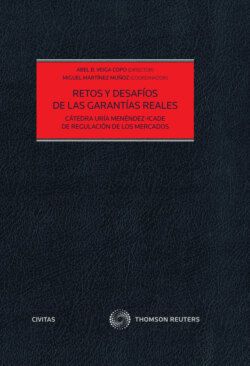Читать книгу Retos y desafíos de las garantías reales - Abel B. Veiga Copo - Страница 15
4. Repos
ОглавлениеAs noted earlier, the so-called double sale, whereby in return for an advance in the form of a price for goods sold the seller undertook to repurchase the goods at an agreed interval at an enhanced price, poses the risk of recharacterisation of a charge over the goods in question. Even if the documentation is drafted with care to avoid inflammatory words like “lending” and “interest”, the agreement is likely to be treated as giving rise to a charge in so far as the recovery of the goods by the original seller under the second leg of the transaction is seen as the recognition of an equity of redemption by that seller67. The same pitfall is not present in the case of repos (sale and repurchase agreements) in that the subject matter of the second leg of a transaction dealing with securities or instruments will consist of the fungible equivalent of what was supplied under the first leg and not the self-same securities or instruments. This would appear to be fatal to the claim that, seen overall, the financial arrangement should be seen as a charge. Before we arrive firmly at that conclusion, a short excursion should be made into the outcome of an investment scheme concerning bullion. This concerned an investment in gold coinage whereby investors –largely consisting of professionals such as doctors, accountants and lawyers– were encouraged to purchase Krugerrands and Canadian gold maple leaf coins. The seller than assumed the guise of a custodian of valuables, assuring its investors that they could withdraw their bullion at any time of their choosing. In reality, the seller behaved more like a bank, retaining a cushion of assets to meet intermittent withdrawals, than a custodian of valuables when it used the bullion in its trading activities. It became insolvent and one of the questions in the litigation was whether the investors had a proprietary interest in such remaining bullion as answered to the description in the investment contracts. On appeal from the New Zealand courts, the Privy Council concluded that there was no intention on the part of the seller to constitute itself a trustee of the bullion, so as to confer on the investors a proprietary interest superior to that of a bank with a charge over the seller’s inventory (stock-in-trade)68.
Applying that reasoning to a repo transaction, even if the buyer of the securities or instruments under the first leg of the transaction had securities or instruments of the kind it would otherwise have been able to use for the second leg but for its own intervening insolvency, the seller under the first leg would not be entitled to a proprietary interest over them. That buyer could never have been compelled to resort to those securities or instruments had it been able to carry out the second leg since it could have acquired their fungible equivalent elsewhere to use in fulfilment of the second leg. For proprietary interests to exist in goods or intangibles such as securities, the subject matter of the proprietary right has to be identifiable. The seller’s interest in a repo transaction is largely protected by other means. If the buyer under the first leg becomes insolvent and cannot perform the second leg, the seller is liberated from its contractual obligation to repurchase at the enhanced price69.
